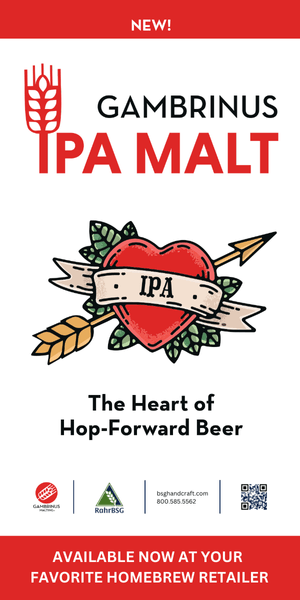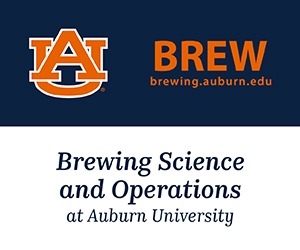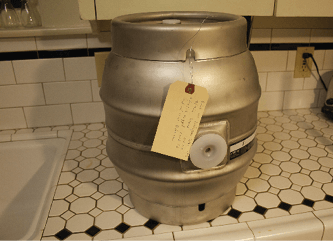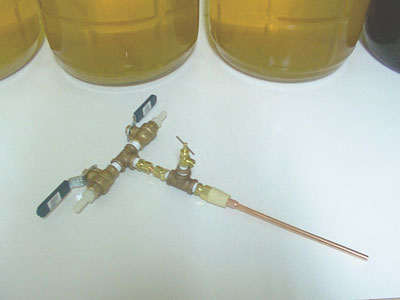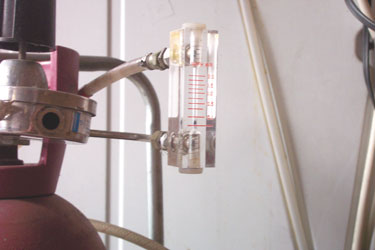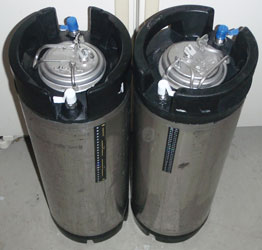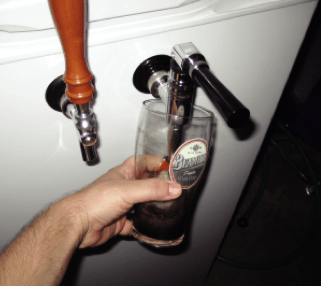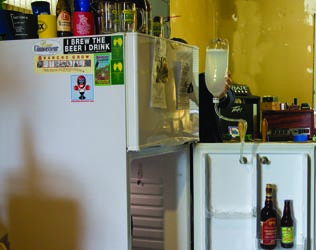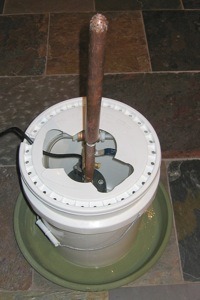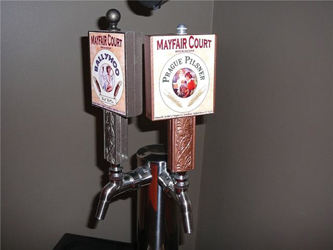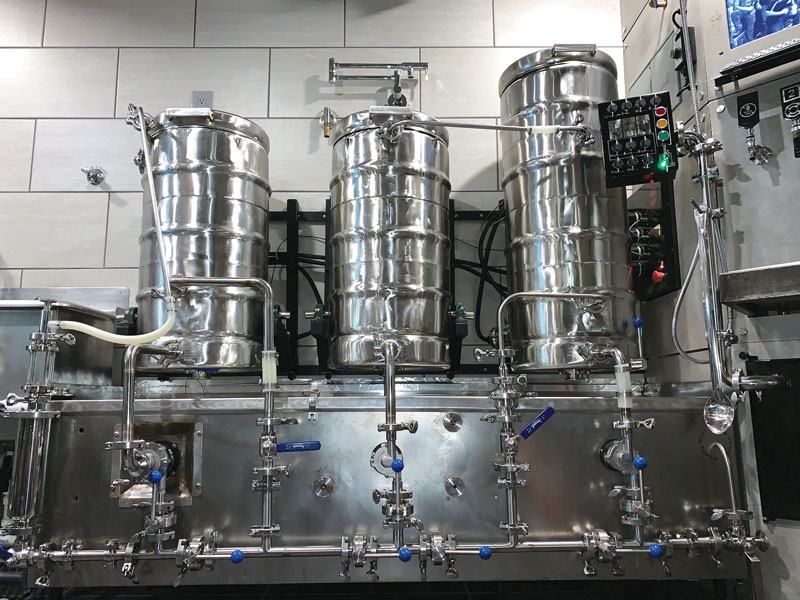Special Issue: Guide to Kegging
Project
Serving Cask-Conditioned Ale
An easy to follow guide to getting your homebrew served on cask.
Mr. Wizard
Benefits of Counter-Pressure Bottle Filling
The amount of carbonation lost during filling is heavily influenced by the carbonation level of the beer being filled. Highly carbonated beers lose more carbonation when bottled compared to beers with lower
Mr. Wizard
Storability of Counter-Pressure Filled Bottles
This is the question that every brewer who bottles their beer wants answered, and the answer depends on your bottling techniques. When carbonated beer is bottled, the shelf-life clock starts ticking. With
Mr. Wizard
Counter-Pressure Bottling Tips
If there are problems, what I would check first is the length of the fill tube. One of the most important rules of bottle filling is to gently fill the bottle. There
Mr. Wizard
Counter-Pressure Bottle Filling
A counter-pressure bottle filler is designed to deliver a carbonated product into a bottle without excessive foaming. The basic idea behind these devices is to first pressurize the beer bottle to the
Mr. Wizard
Conditioning Kegged Beer
Bottle- and keg-conditioned ales must go through several key steps before they can be refrigerated and enjoyed. The first step is to estimate the volume of beer and to add an appropriate
Mr. Wizard
Removing Yeast Before Kegging
One of the best ways for homebrewers to clarify beer is to simply move the carboy to a refrigerator and hold it cold (38 °F/3.3 °C is ideal, but anything colder than
Mr. Wizard
Cold Conditioning a Keg
I prefer to cold condition after carbonation, because you can remove yeast by racking the beer from keg to keg without worrying about having enough yeast in the beer at bottling time
Mr. Wizard
Nitro Beer
The process of adding nitrogen to beer is referred to as nitrogenation. This is somewhat of a misnomer since nitrogenated beers also contain carbon dioxide and the gas blend used for the
Mr. Wizard
Fix Over-Carbonated Kegs
I prefer to package beer in kegs for several reasons. Besides being convenient, perhaps the best thing about a keg is that it’s very easy to change the carbonation level in a
Mr. Wizard
Crank and Shake Carbonation
The “crank and shake” method to carbonate beer, which has a scrumptious name, is widely suggested and is probably the crudest method imaginable for carbonation. It is simply bad advice given by
Mr. Wizard
Force Carbonating Method
The easiest and best way to properly carbonate your beer is to exercise a little patience and to equip yourself with the proper tools. In the case of carbonation, a gas table
Mr. Wizard
Appropriate Carbonation Levels
In the United States, carbonation level is expressed in volumes of carbon dioxide. A volume of carbon dioxide is defined as the volume of gas that could be removed from a volume
Mr. Wizard
Strong Chemical Taste in Kegged Beer
Chemical off-flavors are frequently encountered in beer and can be caused by numerous factors. The most obvious cause comes from traces of cleaning or sanitizing chemicals left on equipment surfaces after use.
Mr. Wizard
Removing Soda Flavor from a Keg
Ahhh, the old root-beer beer. This reminds me of a time when I screwed up a beer experiment with the remnants of a root beer experiment. We had three groups in our
Mr. Wizard
Are Bottles or Kegs better for long term beer storage?
So how do bottles differ from kegs? If bottled properly, they really should have similar storage properties. The big difference with bottling a five-gallon batch versus kegging a five-gallon batch is roughly
Mr. Wizard
Temperatures affects on beer stored in kegs
The answer to this question has plagued brewers since beer was first conceived or however it came into being. Many famous scientists studied the spoilage of beer and wine, and Louis Pasteur
Project
Club Kegerator
Arrive to the show in style with this homebrew club kegerator build.
Project
Build a Draft Jockey Box
You have your kegerator set up and running smoothly; your friends love to drop by and drink your homebrew on tap. But now you (and they) want to bring your finely crafted brew out and about to parties, picnics, and other social gatherings. You could build a portable kegerator, but there is a cheaper and simpler alternative that also opens up the possibility of serving multiple kegs on the go: a jockey box.
Article
Counter-Pressure Bottling
The main challenges of counter-pressure bottling are to retain the beer’s carbonation and minimize its exposure to oxygen during the transfer. When performed correctly, almost all of a beer’s carbonation is retained when it is counter-pressure bottled. Likewise, with a little practice, the beer can be transferred with minimal exposure to oxygen. Learn how with pointers found here.
Article
Balancing Your Draft System
A properly set up and maintained home dispensing system allows you to pour correctly carbonated beer that has the appropriate head and appearance for style. However, it can also be the source of frustration if things are not done right. Learn how to properly set up and maintain your draft system.
Article
Carbonating Options for Kegging
Techniques and pointers for force carbonating your beer, including a carbonation chart to get your desired CO2 level dialed in.
Article
Mini Kegs & Keg Alternatives
Mini-kegs are an option for homebrewers looking to avoid bottling, but who don’t have the space for a full kegging system.
Article
Serving Cask-Conditioned Ales at Home
On a recent road trip through eastern Oregon, my wife and I finally got to visit a brewpub that has been on our list for a long time, Deschutes Brewing in Bend.
Article
Nitrogen Draft Systems
Anyone who has ever had a Guinness Stout on tap knows the cascading off-white head surging and swirling above the nearly black liquid. The head is full of extremely fine bubbles, creamy
Article
Refurbishing and Cleaning Kegs
Used Cornelius style kegs are widely available at reasonable prices. A considerable amount of money can be saved if you buy kegs that have not been worked on in any way and
Article
Introduction To Kegging
Thinking about moving to a kegging system? Learn the pros and cons of kegging your beer, the required equipment, some of the basic carbonation techniques, and the key concepts for those new to draft systems.
Project
Build a Kegerator
In this project, I’ll outline how to build a basic, two-tap kegerator. It’s not a cheap project, but the benefits are tremendous and well worth the money. Before you can get started
Resource
Carbonation Priming Chart
The amount of carbonation in bottle-conditioned homebrew is dependent on two things — the residual level of carbon dioxide after fermentation and the amount of carbonation obtained from the priming sugar. To
Project
Build a Draft Tower
Build your own draft tower from PVC piping for a fraction of the price of a new one. This project is quick and easy, yet still looks great and works perfectly.
Project
Simple Tap Cleaner: Projects
Build your own cheap, but effective, tap cleaner.
Project
Build a Heated Keg Cleaner: Projects
Keep your kegs and carboys clean with this bucket-based spray cleaner.
Project
Build A Tap Handle: Projects
Build your own tap handles and show off your labels.
Project
Build Your Own Spunding Valve to Carbonate in the Keg
With this homemade spunding valve you can naturally carbonate your homebrew by capturing the carbon dioxide produced late in fermentation just like many pros do on the commercial side.
Project
Build a Counter-Pressure Bottle Filler: Projects
Want to bottle sediment-free beer from your keg? With an hour of your time and $30 worth of parts, you can make your own counter-pressure bottle filler.
Mr. Wizard
How long will my beer stay fresh in a keg?
Dear Mr. Wizard: I am thinking of kicking the bottle habit and kegging my beer instead. My biggest concern is storage temperature and how long my beer will stay good in a
